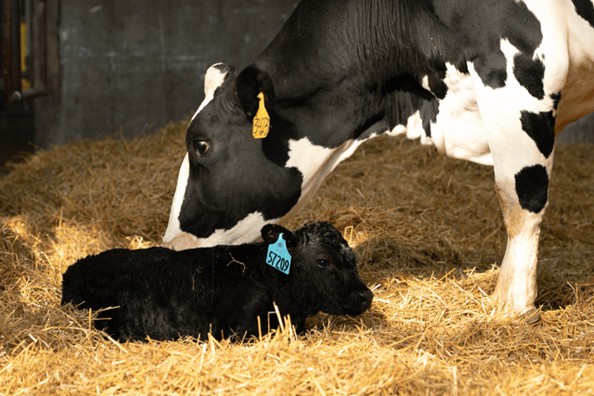by Dr. Derrell Peel – Oklahoma State University Extension Livestock Marketing Specialist
The most common question I get at market outlook presentations is “What is the market impact of all these beef on dairy calves?” There seems to be a perception that these calves represent an additional number of cattle beyond the traditionally available cattle inventory data.
Historically the dairy industry bred all cows to dairy genetics, using the 50 percent heifer calf crop to ensure sufficient heifers from which to select the best genetics for the milking herd. The male calves and culled females became part of the beef industry. The growing production of beef x dairy crossbred calves in recent years is the result of increased commercial feasibility of sexed-semen technology. With sexed-semen, dairy producers can target the production of dairy replacement heifers in a subset of genetically superior cows. This frees up the remaining dairy cows to utilize beef genetics and produce crossbred calves.
Straightbred dairy steers and heifers are heavily discounted in beef markets because the light muscled animals produce carcasses with less desirable muscle conformation. Beef x dairy crossbred calves are significantly more valuable because the resulting carcasses have improved muscling and carcass conformation. Straightbred dairy calves not used for milk replacements previously entered the beef market simply as a residual, with limited or, sometimes no, value in the beef industry.
In contrast, beef x dairy cross calves are a significant source of revenue for dairy producers and are subject to management choices regarding genetics and production. Numbers are uncertain but a significant percentage of potential non-replacement dairy calf production today are beef x dairy crosses.
USDA-NASS estimated the Jan. 1, 2024 inventory of dairy cows at 9.36 million head. The dairy herd is relatively stable and has only varied by 130 thousand head, or 1.4 percent, from maximum to minimum in the last ten years. The dairy industry contributes an average of roughly 26 percent of the total U.S. calf crop each year.
The contribution of the dairy industry to beef production does not change significantly year to year although the relative share of dairy in beef production increases slightly when the beef industry declines cyclically. Growth in production of beef x dairy crossbred calves does not represent any net additional production of cattle but rather a change in the genetic composition of dairy calf production.
Dairy production, including beef x dairy calves, are included in the cattle inventory and production data that are routinely available. Calf crop, cattle on feed, and slaughter data and other data include beef and dairy sectors and therefore already account for the beef x dairy calves now being produced in the dairy sector. Beef x dairy calf production is not having much impact on total beef production and market prices beyond what is already considered in market analysis.
There are some impacts in specific meat markets because the beef cuts from beef x dairy carcasses may have access to markets previously closed to dairy beef. Arguably, the biggest impact of beef x dairy production is the blurring of the historical demarcation between beef and dairy sectors in the U.S.
Photo: ABS Global


